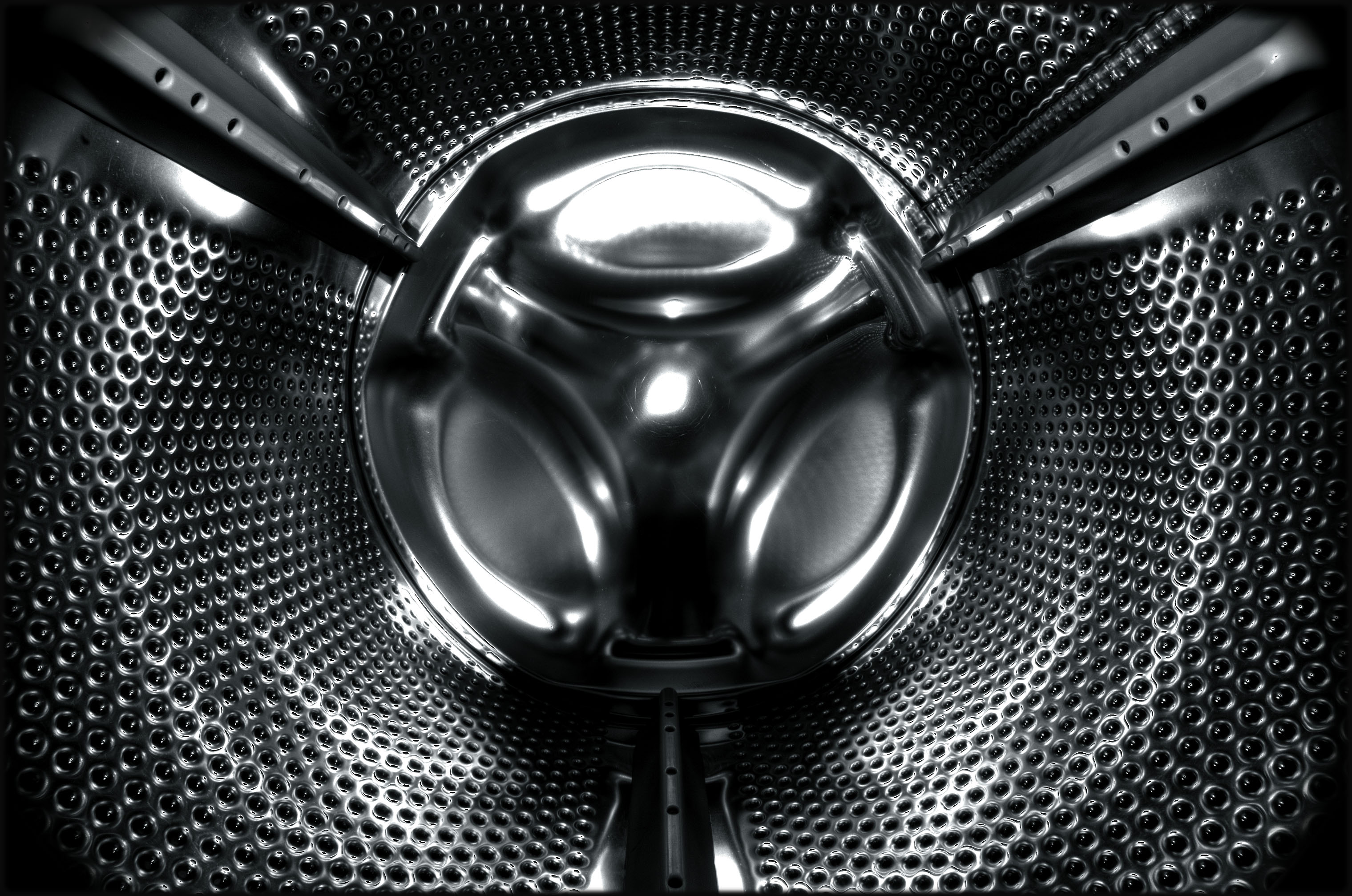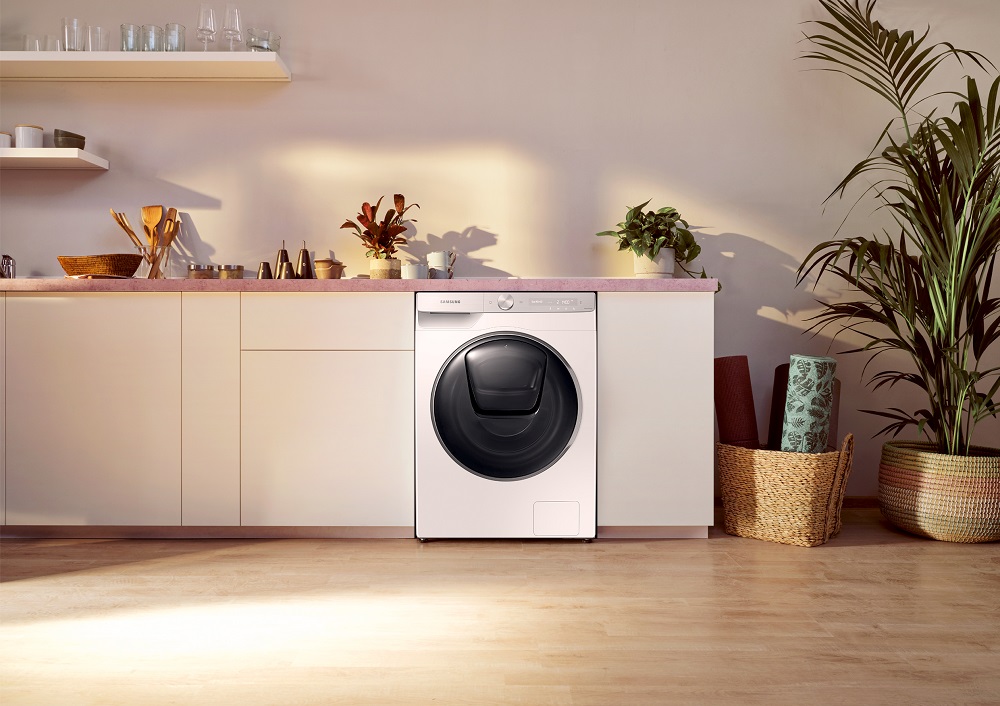How To Deep Clean Washer Machine
If you don't regularly clean your washing machine, you really should. And luckily this guide on how to clean a washing machine covers all the steps, from giving the drum a good clean to ridding the detergent drawer of mildew.
Your washer is designed to clean your clothes, so if you don't clean it, how can it do it's job properly? It could be depositing all kinds of mould, bacteria and germs on your laundry in the process of 'cleaning' it, so you can wave goodbye to that sought after fresh cotton smell.
Don't worry though as cleaning your washing machine is really easy, even if you have left grime to build up for some time. What's more a lot of the ingredients you need to get it gleaming could already be in your kitchen cupboards. So, whether you want to use gentle vinegar and baking powder, or perhaps blitz through bacteria with bleach, we have plenty of methods to clean in a way that suits you.
We've covered everything in our guide to help you clean your washer from the inside top or front loader drum, to the door seals, detergent drawer, filter and exterior. Keep scrolling, to find the method for you to keep the best washing machine in perfect working condition for years to come.
How often should you clean a washing machine?
Cleaning a washing machine shouldn't just be a spring cleaning job, but a regular occurrence. Washer hygiene is essential to keep your appliance working properly too so deep clean yours every month, depending on how often you use it, to keep your whites whiter and ensure a sweet-smelling pile of laundry.
Note: Cleaning your washing machine should be easy. As a first step, read your washing machine's manual for instructions on how to clean; some manufacturers discourage the use of de-scaling products in their machines. In some cases, this may invalidate your warranty, so check before you do anything.
1. Cleaning a washing machine: the basic method
The first thing to know about cleaning a washing machine is that very hot water will do a lot of the job for you. So, if you've never cleaned your washing machine, just pop it on the hottest cycle it's got with no clothes in it. You can use a washing machine cleaner or a bit of laundry detergent, but even just near-boiling water should give you a clean(er) washing machine.
2. How to clean a washing machine's detergent drawer
Remove the detergent drawer at the front of the machine (check your manual if you need advice for how to fully remove it). Soak the drawer in hot, soapy water and, using an old toothbrush, scrub away any soap build up or mold. Rinse thoroughly, and dry with a tea towel. Before you put it back, clean out the cavity – it's likely there's some hidden mold there, too.
The washing machine detergent drawer gets surprisingly dirty for an area that's designed to hold detergent so it's crucial to start here.
- How to get rid of mold and mildew
3. How to clean a washing machine with vinegar and baking soda
Top loader: Set your machine on its hottest cycle (or a minimum of 60ºC) and pour 230ml of white vinegar directly into to the drum. The vinegar is the perfect solution to help to purify your machine – it's an excellent, natural way to kill bacteria, and the smell will disappear during the rinse cycle. When the cycle is over, add a 1/2 of baking soda to the drum and start the hottest cycle again. Clean the door seals and exterior once done and ensure the inside is totally dry by wiping it down then leaving the door open.
Front loader: Pour two cups white vinegar into the detergent drawer, and run the washer through it's hottest cycle. Once complete, run the hottest cycle again, adding 1/2 cup baking soda to the drum directly. Then wipe the inside of the washer drum down with a microfibre cloth and clean the exterior and door seals also.
- Use our guide to cleaning with vinegar to find lots more useful tips.
4. How to clean a washing machine with bleach
Top and front loader: Add half a cup of bleach directly into your washing machine's drum, and half into your detergent drawer. Run an empty hot wash. If you can pause your wash once the machine has filled with water, do so for a good hour. Then start the cycle again. Run an extra rinse cycle to ensure all the bleach has been removed. Once it's finished, wipe down the inside of the door and dry out the seals.
If you're a fan of cleaning with bleach, you won't baulk at using it to clean a washing machine. It is, obviously, very effective at cleaning dirt and mould from both the drum and detergent drawer of the washing machine, and also the exterior.
Note: Next time you put on a wash, ensure it's a white one that might benefit rather than be damaged by any bleach residue left in the washing machine.
5. Cleaning a washing machine's rubber seals
The rubber seals of a washing machine, like the detergent drawer, are a haven for mold and mildew – but you'll also find everything from coins to hair in there.
Use a damp cloth saturated with soapy water wipe around the rubber seals of the washing machine. Be careful when you lift them away from the metal as you may accidentally rip or unseal them. Where possible wipe away any residue that is stuck to the seal. If necessary gently remove any stubborn grime with a toothbrush.
6. How to clean a washing machine filter
The washing machine's filter, usually found beneath the drum door just above floor level, stops all the nasty stuff that gathers in the crevices too – fluff, hair and coins – from reaching the pump. So, it does an important job. But... just like the detergent drawer, it can be a great place for mold and germs to grow, which can, in turn, make your washing machine smell.
Check your washing machine's instructions to find out how to remove the cover if it's fixed, and how to remove the filter. The user manual should also explain how to clean the filter. You may need to place a bowl or tray on a towel beneath it to catch leaks from the drain. Replace the cover carefully.

(Image credit: Getty )
7. How to clean a washing machine's exterior
The drum in particular becomes quickly dusty, but the detergent drawer can drip, as can the drum itself during or after a wash.
Top and front loaders: Using a damp cloth and washing up liquid, clean any stains from the outside of the washing machine and wipe away any dust. Dry the exterior with a clean kitchen towel.
8. Use your detergent as a washing machine cleaner
It's perfectly fine to run a maintenance clean with laundry detergent rather than a specialised washing machine cleaner. You can use your regular detergent – although we find that what works best is a natural, plant-based detergent marked as 'concentrated'. These are typically stronger, so you don't need to use a lot of it, and they leave your washing machine sparkling clean. Our favorite is the Method Concentrated Laundry Detergent in Wild Lavender. It's 95 per cent plant based and contains powerful enzymes that are up to the task of deep cleaning your machine, as well as your clothes. And it smells so, so good. It also comes in refillable, recycled packaging.
We're also big fans of Smol – an online company that sends you washing pods every month, based on how many washes you do weekly. These pods come in bio or non-bio versions and they are eco-friendly, cruelty free and very convenient since they get delivered straight through your letterbox. They also work out to be cheaper than normal washing pods, somehow, while you can grab your first box for free – just pay £1 for the postage – so that you can try before you buy.
9. Use sodium percarbonate to deodorize your machine
Sodium percarbonate is also often labelled as 'laundry bleach' or 'oxygen bleach' and does a really good job at freshening up and ridding washing machines of unpleasant smells.
Stronger than baking soda but safer than liquid bleach, it's a great all-rounder for your weekly washing machine clean. It comes in powder form and should be used in exactly the same way as sodium bicarbonate.
10. How to clean a washing machine with vitamin C
There are two main ways to try and get rid of buildup in your washing machine: one is with an alkaline substance such as baking soda. Baking soda's high pH makes it perfect for cutting through greasy and oily stains, making it very effective in kitchens. However, if you live in a hard water area, you may have noticed that cleaning your washing machine with baking soda isn't doing a lot.
If that's the case, it's time to try the opposite – acidic – approach. Citric acid and ascorbic acid (commonly known as vitamin C) are reducing or chelating agents, which makes them particularly effective for cleaning buildup associated with hard water – rust, limescale, and soap scum or detergent buildup.
Bring a pan of water to the boil, take off the heat, and dissolve approximately 200 grams of ascorbic acid powder and 100 grams of citric acid powder in the water. Add the warm solution directly to the drum of your machine and pour a little into the tray. Run the machine on a hot wash without any clothes. Don't use citric acid undiluted on plastic washing machine trays as it could cause damage.
11. How to get rid of limescale in the washing machine
As for your washing machine, there are plenty of products around, but white vinegar will do the job a treat, too. Add a large cup to the detergent drawer and run a hot wash cycle. Keep your clothes out of the equation for this wash, of course.
If your washing machine manufacturer discourages the use of vinegar in the machine, we've tried out the best washing machine cleaners. Our favorite is Calgon Washing Machine Tablets 2 in 1, as they not only clean inside the appliance but help to protect the drum and any plastic parts from limescale build-up, too.
12. Clean a washing machine with soda crystals and vinegar
Top/front loader: For the best results when cleaning your washing machine, always put the crystals directly inside the drum. Clean your tray and door separately with a brush, using vinegar and/or washing-up liquid. Scrub like you mean it to get rid of residue buildup and any mold.
Then, pour half a pack (500 grams) of the soda crystals into the drum and run the machine on the hottest cycle it can do. Always choose the full cycle length to really get the benefit of the crystals' cleaning power. You can also add a bit more vinegar to the detergent tray to clean and disinfect the hard-to-reach parts of your washing machine.

(Image credit: Getty Images)
13. Try Mrs Hinch's way of cleaning a washing machine
There are just a few simple steps if you want to hinch your washing machine to cleanliness:
1. Mrs Hinch fans, this will be no surprise. She grabs a Moppet sponge to tackle the scummy washing machine seal.
2. The queen of cleaning gives the sponge a few squirts of Flash bathroom cleaner first, before wiping round the machine's seal, and into the folds of the seal where soap scum can build up.
3. To get the washing machine drum clean, Mrs Hinch likes to add some cleaning crystals, and a cup of white vinegar.
4. We like this neat trick. As well as running a quick cycle with these cleaners on board, Mrs Hinch recommends adding the sponge (or any tea towels or cloths you've used) to the load so they get clean, too.
5. Mrs Hinch finishes her washing machine cleaning by giving the outside a quick wipe down. Already taken a guess at what she might use for the job? Yup, she uses diluted Zoflora.
14. Cleaning your washing machine with epsom salts and vinegar
Epsom salts are a hugely underrated cleansing agent, used for generations to treat various skin conditions. If it's good enough for your bath, it's definitely good enough for your washing machine.
Epsom salt is very different from table salt; its chemical composition is magnesium sulphate, containing magnesium, sulphur, and oxygen. The benefits of epsom salts in your washing machine go far beyond a simple scrubbing action from the salt; instead, its chemical composition is naturally antibacterial, so it will disinfect rather than just scrape the inside of your machine.
1. Simply add a cup of epsom salts to half a cup of vinegar, or even just water, and add directly to the drum.
2. Run the washing machine on the hottest cycle it can do, pausing the machine at the beginning of the cycle and letting the saline solution soak for at least half an hour.
3. Let the machine finish the cycle and enjoy the results.
Then, use the rest of your salts in your bath, or to clean bathroom tiles. Not bad for just one product.
15. How to prevent a smelly washing machine
- Leave the detergent drawer open: Letting this area air out in between wash cycles will help prevent mold growing in there.
- Measure detergent: Use only as much detergent as is necessary, following the guidelines on the packaging; overloading detergent will create a build up inside the machine.
- Run empty hot washes: Once a month run an empty hot wash to eliminate any build-up and smells, adding in baking/bicarbonate of soda or vinegar as an extra precaution.
- Air out the drum: In between washes leave the washer door open, or at least until the interior and drum has dried out. This reduces the chance of mold and bacteria growing inside.
- Keep seals clean: Run a hot maintenance wash according to the washing machine manufacturer's instructions. After every wash, as you empty the washing machine, check that nothing has been deposited into the crevices between the seals.
- Keep the filter clean: Repeat the filter cleaning process once every three or four months and your washing machine will function so much better.
- Take care of the exterior: A quick, regular wipe over will be easier in the long run than a thorough annual cleaning.
- Keep dirt out: Brushing off any excess dirt from muddy clothing before putting inside your appliance will keep it as clean as possible.
- Think about limescale: If you live in a hard water area, use a water softener attached to your in-flow pipe or put softener tablets in with your wash. Both of these will help minimise the build-up of limescale.

(Image credit: AO)
What not to do when cleaning a washing machine
One common mistake when cleaning a washing machine (we're guilty) is trying to run an empty, hot cycle with lots of detergent. What can happen is that the detergent foams up too much inside the drum, which can then cause frothy water to begin spilling out of the machine through the tray compartment, flooding your kitchen.
The solution? Don't use liquid detergent when running a service wash, and if you're using powder detergent, only add a little bit. Better still, avoid using your regular detergent altogether and use a dedicated washing machine cleaner instead.
The best commercial cleaning products to try
We're big fans of natural washing machine cleaners (think: vinegar) BUT not every washing machine manufacturer approves, and you can invalidate your warranty if you use anything but what they recommend to keep your machine clean and limescale-free.
We've tested tons of the best commercial washer cleaners at Real Homes on our own machines. We've noted the results, taken the products' plus points into account (Does it kill bacteria? Does it protect the plastic parts of the washing machine?), and, of course, looked for good value for money.
The result? Here's a quick sum up:
- Cleaning: they do the job, as you'd expect.
- Germ killers: they kill 99.9 per cent of bacteria, which is what will make your washing machine smell.
- Protecting: they also protect the drum and plastic parts of the machine from damaging limescale buildup, too.
- Soften hard water: they contain active polycarboxylates, and that's how they protect your machine from limescale.
How often do you use them? Ideally, add a tablet to every wash for best results. If that's too often for you (we're talking budgets here), once a week will do the job. Of course, it also depends how much you wash weekly – and how soiled your wash is: muddy dog walkers and sports fans, and sweaty gym bunnies (*guilty) will need to use the tablets more often than those of you who glow rather than sweat and waft about in linen (*that's not us).
Our advice? Buy in bulk. This saves you money and emergency trips to the launderette, as well as emergency plumber call out fees.
Our second favourite washing machine cleaner, in case you're interested, is Dettol Washing Machine Cleaner in lemon. It can be used less frequently than our number one pick, making it a cheaper choice, but we prefer Calgon because it's proven to really tackle limescale (and all our testers live in an area where that's a problem). Not a problem for you? Pick number two for a more economical buy.
Laundry time!
How To Deep Clean Washer Machine
Source: https://www.realhomes.com/advice/how-to-clean-a-washing-machine
Posted by: mcginnisanaturis.blogspot.com

0 Response to "How To Deep Clean Washer Machine"
Post a Comment